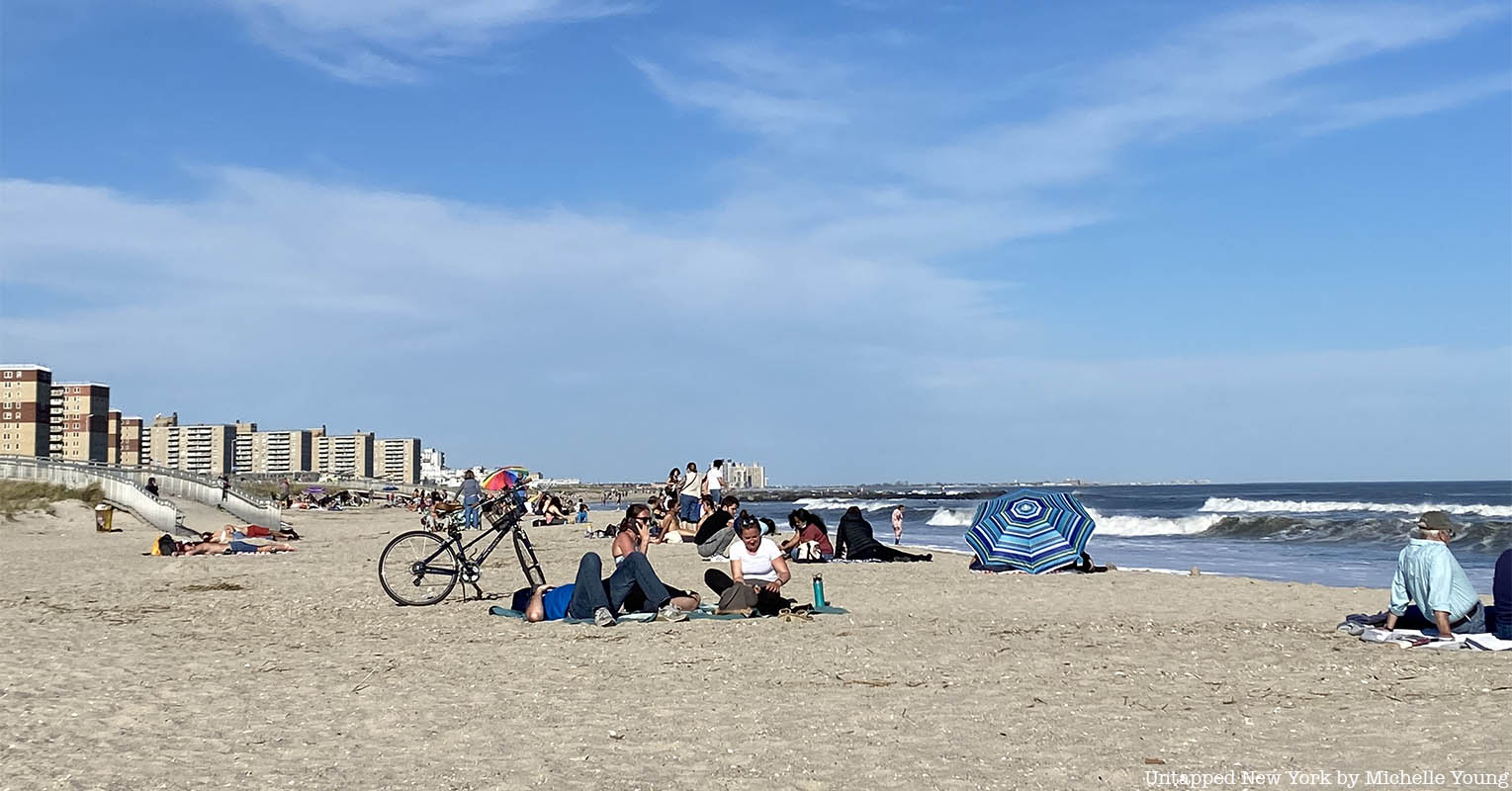 Rockaway Beach
Rockaway Beach
On Tuesday, Mayor Bill de Blasio announced that New York City’s beaches will open on July 1, after previously announcing that the city’s public beaches would be closed for the season. “The rumors are true: NYC beaches will open for swimming on July 1,” de Blasio tweeted. “Let’s keep playing it safe: social distance & face coverings, even at the beach!” Lifeguards will be on duty at the beaches that allow swimming, and city playgrounds have already opened starting Monday. In anticipation of New York’s shortened yet open beach season, here is our guide to New York City’s nine public beaches!
1. Brighton Beach
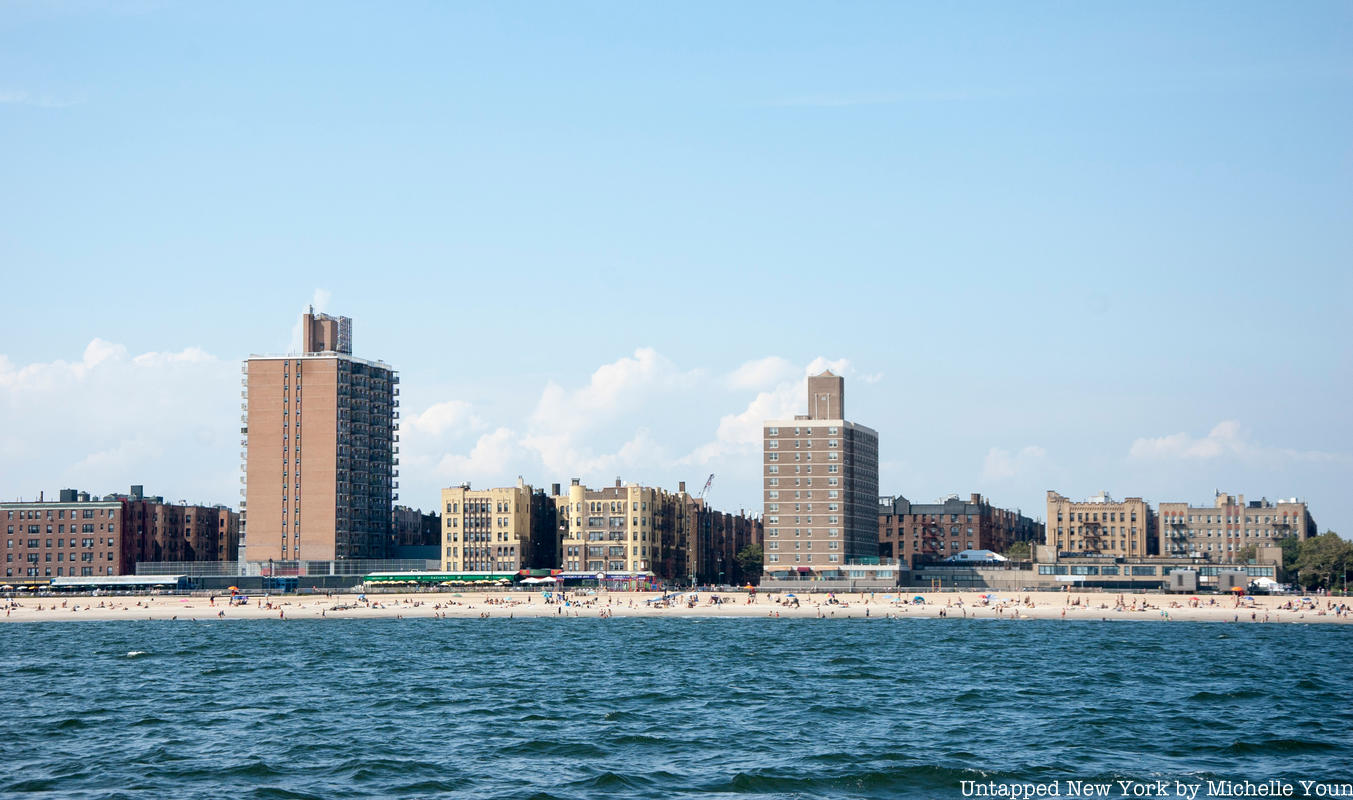
Brighton Beach in Brooklyn is situated right next to Coney Island on Brooklyn’s south shore. The beach and boardwalk are locally in the neighborhood of Brighton Beach, known colloquially as “Little Odessa” due to its high Russian-speaking population. The area was originally farmland before its development in the 1860s, especially after the creation of the Brighton Beach resort named after the English resort town of Brighton. In the largest building move of the 19th century, the resort was pulled away from the water after a decade of beach erosion. The beachfront area also included the Brighton Beach Music Hall, where John Philip Sousa was a composer in residence. The beach was home to the short-lived Brighton Pike, a boardwalk with live entertainment and a roller coaster. The area became increasingly Jewish as thousands of Holocaust survivors moved to apartments by the beach, and by the 1970s, Soviet immigration grew significantly.
Today, the beach is home to a large boardwalk on which several Russian eateries like Tatiana set up tables, as well as small playgrounds. As many apartments are located right by the boardwalk, the beach features a mix of young and old, and languages like Russian, Uzbek, and Kyrgyz are commonly heard while walking. Brighton Beach is also within walking distance to Coney Island sites like Luna Park and the New York Aquarium.
2. Cedar Grove Beach
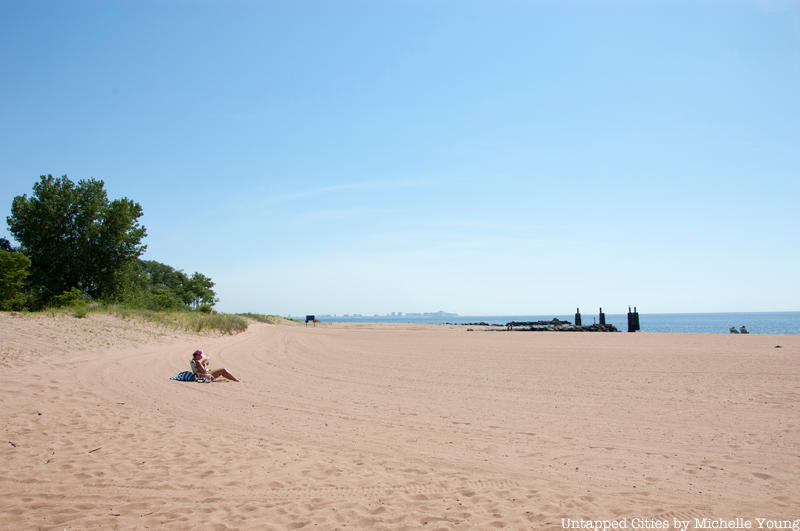 Cedar Grove Beach
Cedar Grove Beach
Cedar Grove Beach in New Dorp, Staten Island, is New York City’s newest beach, brought under city management in 2010. The small sandy beach, stretching for only 2,000 feet, is located in Great Kills Park. The beach is a converted oceanfront bungalow colony that existed for over a century. As a bungalow colony, the beach was technically open to the public, yet it had no lifeguards or restrooms, and many New Yorkers thought that the beach was privately owned.
The Parks Department demolished most of the beach’s 41 bungalows, which was met with disapproval and anger from many Staten Island residents. However, the so-called “Poor Man’s Bermuda” is now a rather quiet escape from the urban environment that remains obscure to many New Yorkers.
3. Coney Island Beach
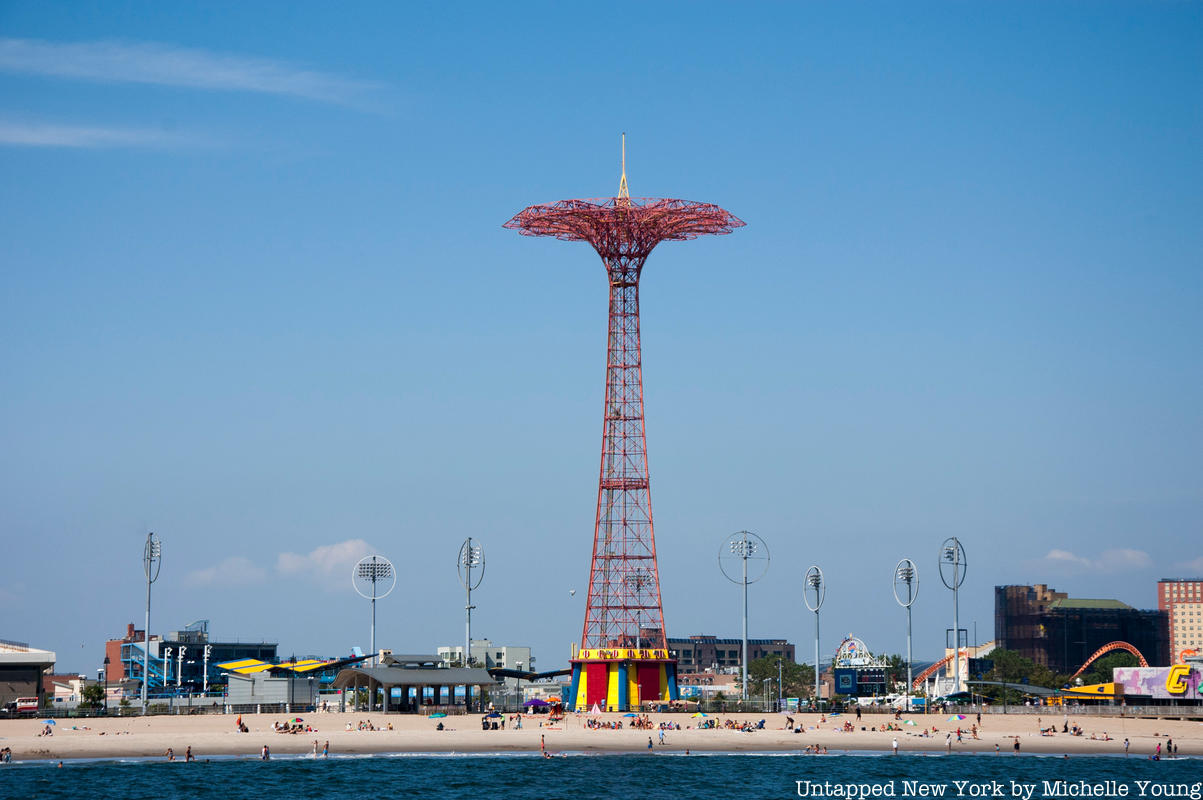
Coney Island Beach sits adjacent to Brighton Beach and is perhaps New York’s most famous waterfront area. Known for its iconic boardwalk, amusement park rides like the Cyclone, and MCU Park, the Brooklyn beach attracts thousands of tourists and locals each year. The boardwalk is also home to a number of shops and restaurants, including Nathan’s Famous, Paul’s Daughter, and Tom’s. In addition to the 2.7-mile-long Riegelmann Boardwalk, Coney Island also includes several public parks like Coney Island Creek Park and nearby Leon S. Kaiser Park.
Although it is now connected to the rest of Brooklyn by landfill, Coney Island was a barrier island originally known as Coney Island in the town of Gravesend. The island remained mostly uninhabited until the 1800s, serving as a site for cattle, horses, and oxen. Supposedly, Herman Melville wrote Moby-Dick while on Coney Island in 1849. By the late 1800s, Coney Island rapidly developed into a resort area with easy access to the rest of the city via numerous railways and streetcars.
Three competing major amusement parks—Luna Park, Dreamland, and Steeplechase Park, opened from 1897 to 1904, which attracted millions of visitors each year. The iconic Wonder Wheel opened in 1920, while the Coney Island Cyclone began operating in 1927. Robert Moses was responsible for renovating many sites on Coney Island, as well as reconstructing part of the boardwalk and adding parking lots. By the 1980s, Coney Island Beach saw a major revival especially after a decade of increased crime and deterioration of many sites, and a number of new construction projects like residential units, hotels, and a redeveloped ice rink have been underway in 2020.
4. Manhattan Beach
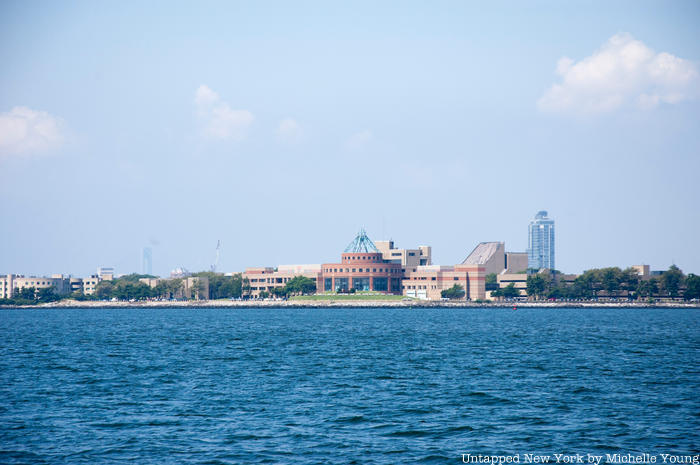
Manhattan Beach, notably not in Manhattan but rather east of Brighton Beach, is a rather calm beach opened in 1877 by real estate developer Austin Corbin, who also owned the Long Island Railroad from 1880 until 1896. Manhattan Beach was developed on 500 acres of salt marsh, and it became a tourist destination following the construction of the Oriental Hotel and the Manhattan Beach Hotel. John Philip Sousa even composed the Manhattan Beach March in honor of the latter resort.
The neighborhood of Manhattan Beach quickly transitioned to residential homes in the early 1900s, and the beach became a rather quiet alternative to Coney Island. Today, the beach includes an ocean-themed playground, a small promenade, and a number of barbecues.
5. Midland Beach
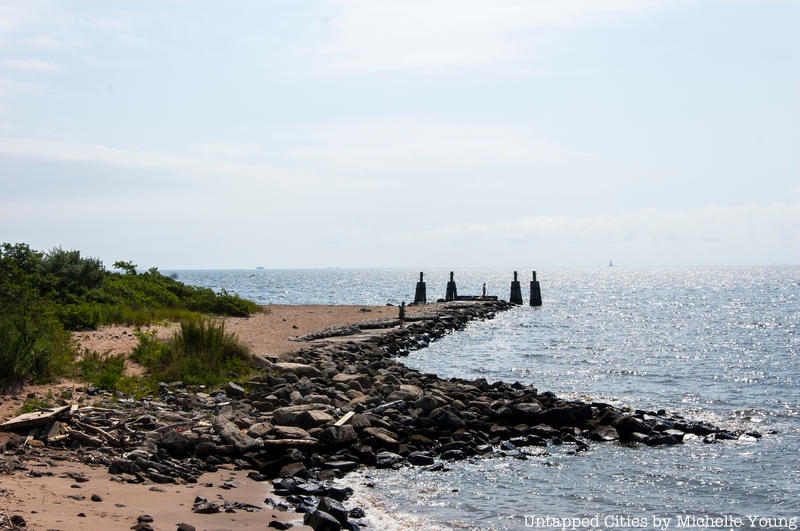
Midland Beach on Staten Island’s “East Shore” is a rather small beach that shares the Franklin D. Roosevelt Boardwalk with neighboring South Beach. The beach is home to a notable sea turtle fountain, as well as tennis and shuffleball courts and a skate park. The neighborhood of Midland Beach grew into a resort area in the 1890s, featuring a 1700-foot pier jutting into the Atlantic Ocean where visitors could ride the steamboat William Story to the Battery in Manhattan.
The beach housed a boardwalk in the early 1900s, as well as theater performances and bungalows by the water. Much of the beach, including the boardwalk, was destroyed by fires in 1924 and 1929, and the beach was slowly rebuilt over the next few years. From the beach, you can see Miller Airfield, a National Parks Service site repurposed from an abandoned airfield with many of the original pieces of infrastructure still standing.
6. Orchard Beach
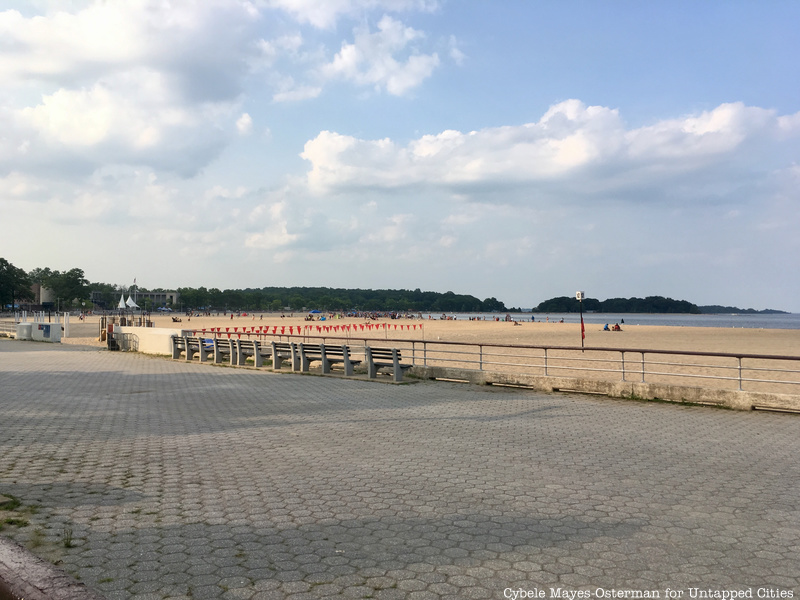 Orchard Beach
Orchard Beach
Orchard Beach is the Bronx’s sole public beach, nicknamed “The Riviera of New York.” The 115-acre beach is part of Pelham Bay Park, New York City’s largest park by area. The beach includes a hexagonal-block promenade, 26 ball courts, two picnic areas, and many nearby hiking trails. The beach is also located near three preserves on Forever Wild’s list: Hunter Island Marine Sanctuary, Thomas Pell Wildlife Refuge, and Pelham Bay Park Preserves. Additionally, the Tribeca Film Festival announced that they will be showing outdoor films at Orchard Beach as part of their Tribeca Drive-In series starting next month.
Orchard Beach was established in 1888 at the northeast tip of Rodman’s Neck, yet Robert Moses was instrumental in Orchard Beach’s expansion. Inspired by Long Island’s Jones Beach, Moses created a plan for the new Orchard Beach that would be carried out by the Works Progress Administration, subsequently canceling over 600 camping leases on the land. Approximately 110 acres of LeRoy’s and Pelham Bays were filled with landfill, and the fill would later be landscaped with flowers, shrubs, and various trees. Both Orchard Beach and Jacob Riis Park were opened on June 25, 1937. Just two years later, there were new plans to expand the beach, including a renovation of the park’s pavilions and a failed proposal for an outdoor theater. 250,000 cubic yards of sand were pumped onto the beach in 2010 to replace sand washed away over the years.
7. Rockaway Beach
 Rockaway Beach
Rockaway Beach
Rockaway Beach is a year-round beach along Queens’ Rockaway Peninsula, perhaps made popular by the Ramones song “Rockaway Beach.” Rockaway Beach is one of the city’s only legal surfing beaches, and it allows for kayaking and paddleboarding. The beach also offers a number of ball courts, playgrounds, and a skate park.
The neighborhood of Rockaway Beach originally consisted of the areas of Holland and Hammels, which later merged into the Village of Rockaway Beach. Off of the beach was Hog Island, a small settlement that supposedly disappeared without a trace following the Hurricane of 1893. Rockaway Beach actually tried to secede from New York City several times in the 1910s, but its secession was vetoed by the mayor. From 1902 to 1987, the beach was home to Rockaways’ Playland, a major amusement park featuring the Atom Smasher roller coaster. Robert Moses’ creation of the Marine Parkway Bridge made it significantly easier to get to Rockaway Beach from Brooklyn. The beach was hit particularly hard by Hurricane Sandy, yet within just a few years, the beach was reopened with a new boardwalk and recreational facilities.
8. South Beach
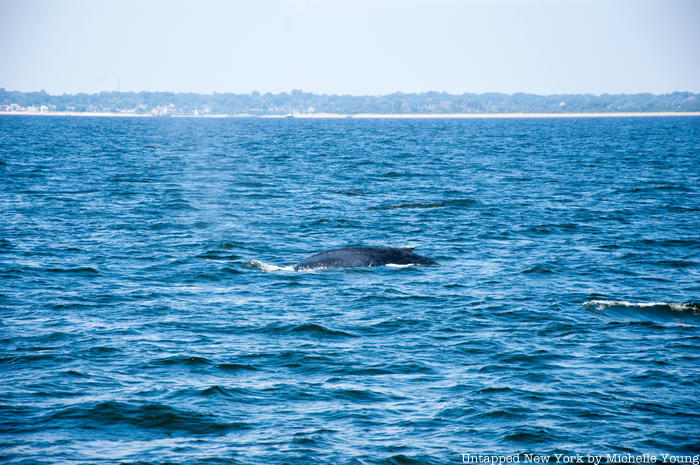 A whale breaching with South Beach in the distance on Staten Island
A whale breaching with South Beach in the distance on Staten Island
Located adjacent to Midland Beach, South Beach in Staten Island is a popular beach with views of the Verrazzano-Narrows Bridge. The beach is well-known for its Franklin D. Roosevelt Boardwalk, scenic trails, Fountain of Dolphins, and Ocean Breeze Fishing Pier, as well as kayaking opportunities. The beach also houses bocce courts, chess tables, and tennis courts.

East of the beach are two small islands, Hoffman Island and Swinburne Island, which were used as quarantine stations that housed immigrants who had symptoms of disease after reaching Ellis Island. By the 1880s, the beach had a 1,700-foot boardwalk and carousel, as well as a beer hall. A fire destroyed much of the area in 1896, including a number of hotels, but 10 years later, Happyland Amusement Park opened on the beach with a miniature railroad, a circle swing, and a number of other rides. However, a 1919 fire destroyed the amusement park and 40 buildings, and five suspicious fires in 1929 further destroyed hotels and the boardwalk. Beachland Amusements operated from 1941 to 2006, the last amusement attraction on the boardwalk.
9. Wolfe’s Pond Beach
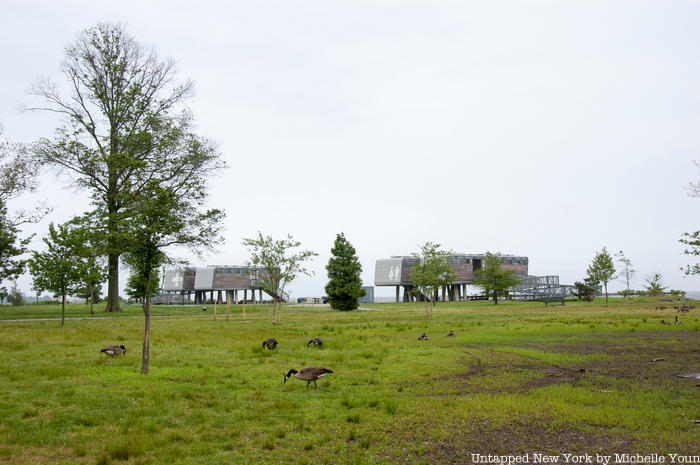
Wolfe’s Pond Beach is what NYC Parks considers “the city’s best-kept secret, a small, calm, and secluded beach that’s a perfect retreat for those looking to get away from summer’s crowds.” The public beach on Staten Island’s South Shore includes a roller hockey rink, nearby playgrounds and hiking trails, and fishing areas. The northern part of the park consists of ponds and woodlands, while its southern half includes its namesake Wolfe’s Pond. Robert Moses had originally planned to build the Wolfe’s Pond Parkway through the park, but it was ultimately canceled. The beach also features a monument commemorating the Battle of the Bulge, the last German offensive of World War II.
Next, check out 10 Forever Wild Nature Preserves in NYC!





